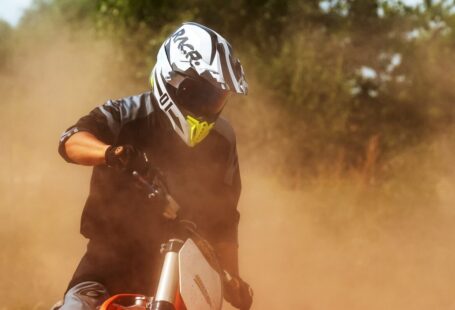Street helmets look like this.
Dirt helmets look like this. You wear them with goggles. Yes, they do protect your face, but that pronounced chin may exaggerate torsional forces in a crash. They’ll also be noisy and unstable at highway speeds. Choose the right helmet for the kind of riding you plan to do.
To be legally worn on the road in Trumpistan, a motorcycle helmet must be marked with a DOT-approved sticker. You’ll see those affixed prominently on the back.
That’s just a minimal legal standard, though. Two other certifications compete for your dollar by promising greater safety, both voluntary in the United States. “ECE 22.05” is the European Union’s legal standard, while there’s also something called Snell, which is popular with a a number of large helmet manufacturers.
If you want the best possible safety, we say opt for an ECE 22.05-rated helmet. Every single racer in MotoGP (the top level of motorcycle sport) chooses to wear an ECE-rated helmet, and they (the helmets, not the MotoGP riders) tend to be lighter than their Snell equivalent.
You don’t need to spend a ton of cash to get the safest possible helmet. Many manufacturers offer high-quality, high-spec helmets for not an excessive amount of dough. More expensive helmets generally cost more because they use more expensive materials for shell construction like a fiberglass/Kevlar/carbon fiber weave. This can make them lighter, but does not make them any safer. Spending a lot nets you things like paint quality, fancy graphics, and fancier ventilation, but not necessarily added safety.
The shape and size of every person’s head is unique. You need to find a helmet that fits you perfectly; sizes and shapes vary heavily between manufacturers and models. To determine your shape and size, visit a large brick-and-mortar retailer and try on every helmet you can. You’ll know one fits when it evenly holds your head all the way around, with no pressure points. Put it on, grasp the chin and try to rotate the helmet while resisting the movement with your head. The helmet shouldn’t be able to rotate independently of your scalp. It should fit snugly, but not be too tight. (Note that a new helmet can often feel very tight, though)



